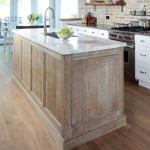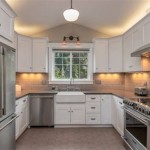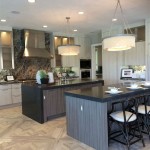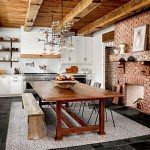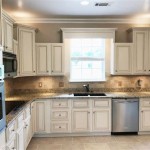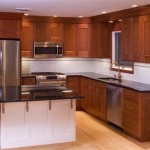Illuminating Culinary Spaces: A Comprehensive Guide to Kitchen Lighting
The kitchen is more than just a place to prepare meals; it's a central hub for family gatherings, social interactions, and individual activities. Effective lighting is crucial for creating a functional, safe, and aesthetically pleasing kitchen environment. Selecting the appropriate type of light for a kitchen requires careful consideration of various factors, including the size of the space, the layout, the existing architectural features, and the desired ambiance. This article will explore different types of kitchen lighting, offering insights into their applications and benefits.
Ambient Lighting: Providing a Foundation
Ambient lighting, also known as general lighting, serves as the foundational layer of illumination in a kitchen. Its primary purpose is to provide overall brightness and visibility throughout the entire space. This type of lighting should be sufficiently bright to allow for safe navigation and comfortable task performance. Several options exist for achieving adequate ambient lighting in a kitchen, each with its own set of characteristics and advantages.
Recessed lighting is a popular choice for ambient kitchen lighting due to its sleek, unobtrusive design and ability to distribute light evenly. These fixtures are installed directly into the ceiling, creating a clean and modern aesthetic. They are particularly well-suited for kitchens with low ceilings, as they do not take up any vertical space. Recessed lighting can be arranged strategically to illuminate specific areas or to provide a consistent level of brightness throughout the room. The use of dimmer switches with recessed lighting allows for adjusting the light output based on the time of day or the activity being performed.
Another option for ambient lighting is surface-mounted fixtures. These lights are mounted directly onto the ceiling surface and are available in a wide range of styles, from simple flush-mount fixtures to more decorative options. Surface-mounted fixtures are a good choice for kitchens where recessed lighting is not feasible, such as in older homes with solid ceilings. They are also easier to install than recessed lights, making them a more accessible option for DIYers.
Chandeliers and pendant lights can also contribute to ambient lighting, particularly in larger kitchens or those with high ceilings. While these fixtures often serve as decorative focal points, they can also provide a significant amount of light. When using chandeliers or pendant lights for ambient lighting, it's important to ensure that they are appropriately sized for the space and that they are positioned to avoid casting shadows or creating glare. Consider the overall style of the kitchen when selecting these fixtures to ensure a cohesive and visually appealing design.
Finally, track lighting offers a flexible solution for ambient lighting in kitchens. Track lighting systems consist of a track that is mounted to the ceiling, with individual light heads that can be positioned and directed as needed. This allows for customizing the lighting to highlight specific areas or features within the kitchen. Track lighting is particularly useful for kitchens with unusual layouts or those that require adjustable lighting for different tasks.
Task Lighting: Enhancing Functionality
Task lighting is designed to provide focused illumination for specific work areas within the kitchen, such as countertops, sinks, and stovetops. Adequate task lighting is essential for safety and efficiency when preparing food, washing dishes, or performing other kitchen-related tasks. Insufficient task lighting can lead to eye strain, fatigue, and even accidents.
Under-cabinet lighting is a primary source of task lighting in most kitchens. These fixtures are mounted beneath the upper cabinets, providing direct illumination to the countertops below. Under-cabinet lighting eliminates shadows and ensures that work surfaces are adequately lit for food preparation. LED strip lights are a popular choice for under-cabinet lighting due to their energy efficiency, long lifespan, and low profile. They can be easily installed and provide a bright, even light distribution.
Pendant lights can also serve as task lighting, particularly over islands or peninsulas. Hanging pendant lights above these work surfaces provides both functional illumination and adds a decorative element to the kitchen. The height of the pendant lights should be carefully considered to ensure that they provide adequate light without obstructing the view or creating glare. Adjustable pendant lights allow for customizing the height and angle of the light, providing greater flexibility.
Another option for task lighting is recessed lighting positioned directly above work areas. This approach is particularly effective for illuminating sinks or stovetops. Recessed lights should be positioned to avoid casting shadows and to provide sufficient light for performing tasks in these areas. Using dimmer switches with recessed task lighting allows for adjusting the light output based on the specific task being performed.
For those with kitchen islands, consider island lighting fixtures specifically designed for task purposes. These can range from simple, functional lights to more decorative designs that blend with the kitchen's aesthetics. Ensure the lighting is bright enough for food prep and other work activities without being too harsh.
Accent Lighting: Adding Visual Interest
Accent lighting is used to highlight specific features or objects within the kitchen, such as artwork, architectural details, or decorative elements. It adds visual interest and depth to the space, creating a more inviting and aesthetically pleasing environment. Accent lighting is typically less bright than ambient or task lighting and is used to draw attention to specific focal points.
Cabinet lighting, both interior and exterior, is a great way to provide accent lighting in a kitchen. Interior cabinet lighting can be used to showcase glassware, china, or other decorative items. Exterior cabinet lighting, such as LED strip lights mounted along the top or bottom of cabinets, can create a soft, ambient glow and highlight the cabinet's architectural details. This type of lighting can also be used to create a layered lighting effect, adding depth and dimension to the kitchen.
Spotlights can be used to highlight artwork, plants, or other decorative items in the kitchen. They can be mounted on tracks or ceilings and directed to focus light on specific areas. Spotlights are particularly effective for highlighting architectural features, such as textured walls or columns. The use of adjustable spotlights allows for customizing the angle and intensity of the light, providing greater flexibility.
Another option for accent lighting is under-counter lighting. These fixtures are mounted beneath the countertops, providing a soft, indirect light that illuminates the floor below. Under-counter lighting can create a dramatic effect and add a touch of elegance to the kitchen. It is also a good option for providing a subtle nightlight, making it easier to navigate the kitchen in the dark.
Pendant lights, beyond their task-oriented potential, can also function as accent pieces, particularly when strategically placed over a kitchen island or breakfast bar. Selecting pendants with unique designs, colors, or materials can contribute significantly to the overall aesthetic of the kitchen, creating a focal point that draws the eye and enhances visual appeal.
In addition to these specific types of lighting, consider incorporating natural light into the kitchen whenever possible. Large windows, skylights, or even strategically placed mirrors can help to maximize natural light and create a brighter, more inviting space. Natural light not only enhances the aesthetics of the kitchen but also improves mood and reduces energy consumption.
Choosing the right type of light source is essential for creating a well-lit and functional kitchen. LED bulbs are a popular choice due to their energy efficiency, long lifespan, and ability to produce a wide range of color temperatures. Halogen bulbs provide a bright, crisp light but are less energy-efficient than LEDs. Incandescent bulbs are the least energy-efficient option and have a shorter lifespan than LEDs or halogens.
Color temperature is another important factor to consider when selecting light bulbs for the kitchen. Color temperature is measured in Kelvin (K) and refers to the warmth or coolness of the light. Warm light (2700-3000K) has a yellowish tint and creates a cozy, inviting atmosphere. Cool light (4000-5000K) has a bluish tint and provides a more energetic and stimulating environment. For kitchens, a color temperature of around 3000-4000K is generally recommended, as it provides a good balance of warmth and brightness.
Implementing a lighting control system can further enhance the functionality and versatility of kitchen lighting. Dimmer switches allow for adjusting the light output of various fixtures, creating different moods and atmospheres. Smart lighting systems allow for controlling the lights remotely using a smartphone or tablet. These systems can also be programmed to automatically adjust the lights based on the time of day or the activity being performed. Motion sensors can be used to automatically turn on and off lights in areas that are frequently used, such as pantries or hallways.
Planning and executing effective kitchen lighting requires a holistic approach. Consider the interplay between ambient, task, and accent lighting to achieve a well-balanced and visually appealing result. Select fixtures and light bulbs that complement the kitchen's style and create the desired ambiance. By paying careful attention to these details, it is possible to transform the kitchen into a functional, safe, and inviting space.

4 Types Of Essential Kitchen Lighting Ckd

How To Use Kitchen Lighting Perfectly Illuminate Your

Types Of Pendat Lights For Kitchen Ceiling Pendant Light Buying Guideglassdomain Blog

Tips And Inspiration For Your Kitchen Lighting Design The White Company

Helpful Lighting Tips For Your Kitchen Island

What Type Of Lighting Is Best For Kitchen Island

What Type Of Lighting Is Best For Kitchen Island

How To Choose The Right Ceiling Light For Room Glassdomain Blogglassdomain Blog

How To Select The Best Pendant Lights For Your Kitchen Island Rc Lighting

10 Kitchen Island Lighting Ideas For A Stylish Glow

